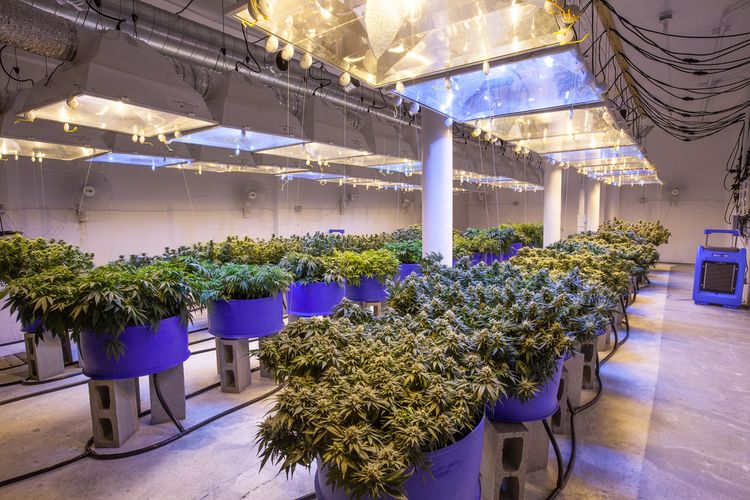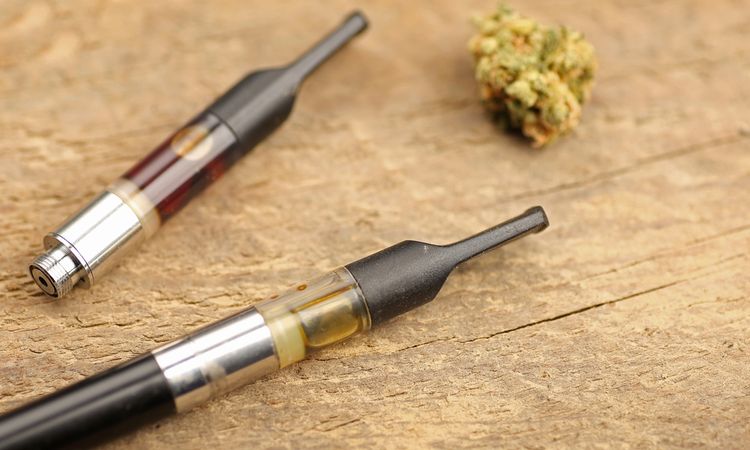Is Cannabis A Solution To Your Health Problems?

By now you know that cannabis has been legalized for medicinal use in many states across the country. But what exactly does this mean? And how could it impact your health? What’s the difference marijuana, hemp and cannabis? Is it all just “weed?”
Let’s start at the top. Marijuana and hemp both come from the same plant with the scientific name cannabis sativa. The difference is that hemp is bred to have only trace amounts of the psychoactive compound that makes people “high”— the cannabinoid called delta-9-tetrahydrocannabinol, or delta-9-THC. Hemp is grown for more industrial uses, like making cloth and rope and paper, while oil pressed from its seeds can be used for all sorts of purposes, such as making ointments and balms.
However, delta-9-THC is only one of dozens of cannabinoids present in cannabis, and it seems that the most important one in terms of potential health benefits is cannabidiol, or CBD. The question is, are there are enough documented benefits of using cannabis that outweigh its potential negative impact? Here’s some good reading material that’ll help you make your own informed decision.
The Effects of Cannabis on Your Brain
Cannabis has been used for thousands of years in various parts of the world for its health benefits. In the United States, it was made illegal back in the ’30s and ’40s because of concerns over its mind-altering effects. Only recently has the movement to allow cannabis use gained enough momentum to achieve various degrees of legalization in some areas. All of this forces us to consider: How exactly does cannabis affect the brain?
Learning Impairment: This depends on dosage, but cannabis impairs your executive functioning, perception, memory, judgment, and attention. The memory and attention effects can actually last for days.
Pleasure Center Stimulation: Cannabis stimulates pleasure centers in your brain— the same ones that are stimulated by substances like alcohol, crack, and heroin.
Decreased Motivation: Over time, heavy users exhibit diminished drive and ambition, along with declining communication skills and increased distractibility. These effects don’t help build or maintain healthy relationships.
Impaired Motor Control: You can experience a distorted sense of time, paranoia, dream-like states, and slower reaction times, all of which means you really shouldn’t be driving when under the influence of cannabis.
Those are some pretty serious negative impacts, but they are temporary, which means it may still be worth carefully managing the negative impacts to get the health benefits.
The Effects of Cannabis on Your Hormones
Cannabis can and does affect people’s hormones, but more so for those who use it regularly and heavily.
Increased Cortisol: Cortisol is a stress hormone, and even though cannabis stimulates pleasure centers in your brain, it’s also causing more cortisol to be released, which may help explain the paranoia effects some people experience.
Decreased Prolactin: This hormone has a lot to do with how you experience sexual pleasure, which means cannabis can make that a bit of a downer.
Female Reproductive Disruption: Women can experience disrupted menstrual cycles and the suppression of eggs being released.
Male Reproductive Inhibition: Cannabis can both delay puberty and reduce sperm production.
Those are some pretty intimidating hormonal effects. But if you aren’t concerned about reproductive capabilities or sexual pleasure….

10 Benefits of Cannabis
Cannabis has analgesic, sedative, anti-inflammatory, antispasmodic, and anticonvulsant properties, which is why it can deliver the following benefits:
- Stress and Anxiety Reduction: Stress is not good for you in either the short or long term, and cannabis fights it by stimulating pleasure centers and hormones that calm down the parts of the brain involved in emotion and fear responses (the hippocampus and amygdala). High doses of CBD oil were shown to help fight anxiety in people engaged in public speaking. It’s becoming increasingly well-known for treating post-traumatic stress disorder (PTSD).
- Sleep Improvement: The calming effects of cannabis can mean better, deeper sleep for people, even those who consider themselves insomniacs. A 160mg dose of CBD oil achieves the desired results for many people.
- Appetite Modification: You’ve no doubt heard about people who smoke pot getting what they call the “munchies.” This is because the right dose of cannabis stimulates your appetite by signaling the release of hunger-inducing hormones, which might be helpful for people who need to or are trying to gain weight. Note that depending on which hormones get stimulated, you could also just as easily wind up suppressing your appetite, so achieving the desired effects can be a little tricky.
- Eyesight Maintenance: The ability of cannabis to prevent and treat both glaucoma and macular degeneration is well documented. Cannabis can significantly lower intraocular pressure (IOP), a major factor involved in glaucoma damage, but the effect is short-lived; that means it requires fairly constant usage (which might not be a good idea for reasons cited earlier).
- Increased Alertness: A small dose of CBD oil (15mg) can actually increase alertness for a short time.
- Pain Reduction: The ability of cannabis to help people manage chronic pain is another well-documented benefit. It probably works through inhibiting the neuronal transmission of pain. It’s also a powerful anti-inflammatory, which makes it useful for treating conditions such as arthritis and fibromyalgia.
- Heart Health: Likely thanks to its antioxidant properties, cannabis boosts heart health by reducing hypertension and atherosclerosis. It widens blood vessels by getting them to relax, thereby preventing strokes and heart attacks.
- Skin Improvement: Cannabis can affect lipid production, which in turn helps control both acne and dry skin. Perhaps even more important are the antioxidant properties of cannabis, which have been documented as more powerful than either vitamins C or E in helping to prevent cell damage that ages the skin. Its anti-anxiety properties can also play a role in reducing eczema, rosacea, and acne— all of which are exacerbated by stress.
- Cancer Prevention: As a supplement when being treated for cancer, cannabis helps reduce the nausea, pain, and lack of appetite often involved in such treatments. More research is needed, but cannabis may also reduce tumor size.
- Specific Disease Treatments: The list of specific diseases that either are or could be treated with cannabis is impressive— chronic pain, anorexia, inflammation, emesis, multiple sclerosis, epilepsy, neurodegenerative disorders, schizophrenia, glaucoma, osteoporosis, cancer, cardiovascular disorders, obesity, and metabolic syndrome-related disorders, to name a few.
Potential Side Effects of Cannabis
We’ve already considered a number of potentially unwanted side effects of cannabis. In addition, because cannabis is a plant crop, some growers may use significant amounts of pesticides, herbicides, fungicides, and fertilizers. Residual traces of such substances may have all sorts of negative side effects.
These can be avoided if you ensure the cannabis you use is grown organically. But even with organic cannabis, every individual is different and may still experience adverse side effects to varying degrees. Definitely avoid using cannabis in any form if you’re pregnant or might become pregnant, as it can cause birth defects and low birth weight. It should also be avoided by those who are breastfeeding infants.
It’s impossible to tell how cannabis might interact with other medications (for example, magnifying drowsiness and fatigue if you’re already taking antidepressants, pain relievers, muscle relaxers, or seizure medications). And don’t forget that because cannabis is still illegal in many places, incarceration can be a major unwanted negative side effect!

The Best Way to Take Cannabis
Here’s one thing you can rule out right away— using any kind of cannabis product that you swallow to get it into your body. Your liver does a great job of breaking down cannabinoids— a mere 6% of what you take will actually make it to your brain. Taking enough oral supplements to enjoy the benefits of cannabis quickly becomes prohibitively expensive.
The reason inhaling cannabis by smoking it works so well is because it gets it to your brain much faster, and more is delivered since the liver is bypassed (to the tune of 30% instead of only 6%). But smoking cannabis is a bad idea, because the act of smoking generates a whole array of other toxins that aren’t good for you, including carcinogens.
You also really can’t control how much of the active ingredients you get when smoking, so if accuracy of dosage is important, smoking simply can’t deliver what you need.
But there’s still a way to get the health benefits—vaporizing CBD oil. Using this method avoids most of the toxins of smoking and allows you to get little to no delta-9-THC, making it by far the safest, most effective, and least expensive way to reap the benefits of cannabis. Dosage control from vaping is still difficult, but with practice, it can be mastered.
Where to Obtain Cannabis
Medical cannabis is legal in the District of Columbia and 25 states: Alaska, Arizona, California, Colorado, Connecticut, Delaware, Georgia, Hawaii, Illinois, Maine, Maryland, Massachusetts, Michigan, Minnesota, Montana, Nevada, New Hampshire, New Jersey, New Mexico, New York, Oregon, Rhode Island, Texas, Vermont, and Washington. That means you have to have a real doctor’s prescription to get it because you have a medical condition it can treat, and you have to obtain it from a licensed distribution center.
The Verdict on Cannabis
My final take on cannabis is this: CBD has too many potential health benefits to ignore, but obtaining high-quality CBD and then getting it safely and affordably into your body is the tricky part. The safest way to do this is by obtaining organically produced CBD oil and then vaporizing it for inhalation. This allows you to avoid the waste/expense involved when you eat it, and produces way fewer toxins than you get by smoking it.
